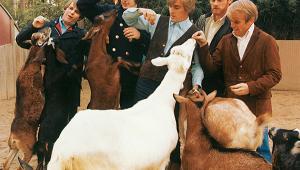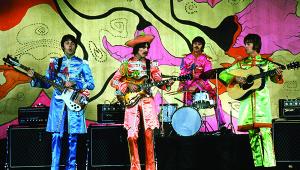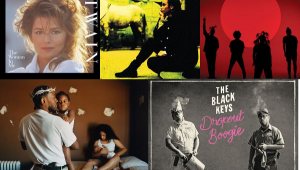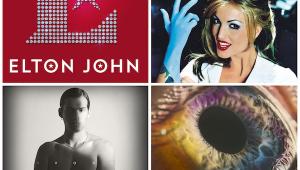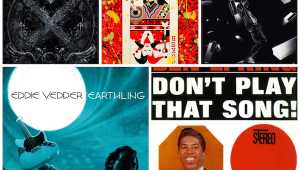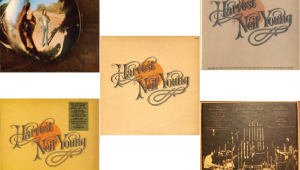Hello friends, have you heard that jeetcity will soon open in Australia? I was very happy because I have known this online casino for a long time, it has established itself as the best in the business. Transaction speed and a nice interface are what I love about jeetcity. I recommend it to you because I want you to play in a good casino!
Steve Hackett on the Genesis of His Surround Sound Mixes and Atmos Inclinations
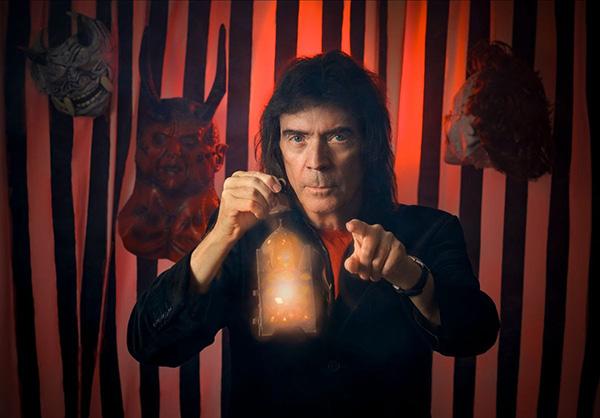
Whenever the calendar turns over to a new year, there’s a pretty good chance a new Steve Hackett solo album will also be in tow and ready to greet our collective ears. And lo, what do you know—early 2024 has indeed blessed us with the presence of the onetime Genesis guitarist/vocalist’s (yes) 30th solo album, The Circus and the Nightwhale (InsideOut Music), which was released in various formats on February 16.
Naturally, the 1CD/1BD mediabook version of the genre-straddling Nightwhale includes a DTS-HD Master Audio 5.1 mix of its 13 tracks done by Hackett’s longtime keyboardist, Roger King. Among the full-field highlights are the all-aswirl post-industrial sturm und clang of “People of the Smoke,” the medieval harmonic and orchestral charms of “Enter the Ring,” and the relentless breakneck thrust of “Circo Inferno.” (“And the circus goes around and around,” indeed. . .)
The Circus and the Nightwhale follows the arc of an artist’s life, wherein the sounds of Hackett’s youth growing up in postwar Britain are blended with where he’s at creatively today, all these many decades later. “We incorporated what it was like back then with the rock band elements that were done with the sounds and production of now,” he explains. Concerning the atypically shorter, 45-minute length of the new album, Hackett adds, “Every now and again, I pared it right down to short little guitar solos. I tried to make them more like vignettes so that they didn’t overstay their welcome in order to leave room for the other song elements thar needed to breathe around them.”
Ever the forward-thinker, Hackett is looking ahead to what he’ll be doing beyond his already jampacked 2024 touring schedule. “You’re quite right—I’m already thinking about what happens next,” he agrees. “I’m not sure I’ve got five albums [of material] just yet, but I’ll be thinking of what’s acoustic, what’s orchestral, what’s rock, and what other genres we’ll be moving into. And because I try to make music that’s inclusive, there are a lot of styles and a lot of instruments to draw from.” Whatever form in which it comes our way, Hackett’s aurally challenging cinema show is always worth experiencing firsthand.
In a recent Zoom interview, Hackett, 74, and I discussed the importance of sound placement in the Nightwhale surround mix, what his favorite Genesis song in 5.1 is, and what Genesis track we’d both like to hear most in Atmos. Can a song travel to the ends of the Earth / Mirror of a moment, ghost of a universe. . .
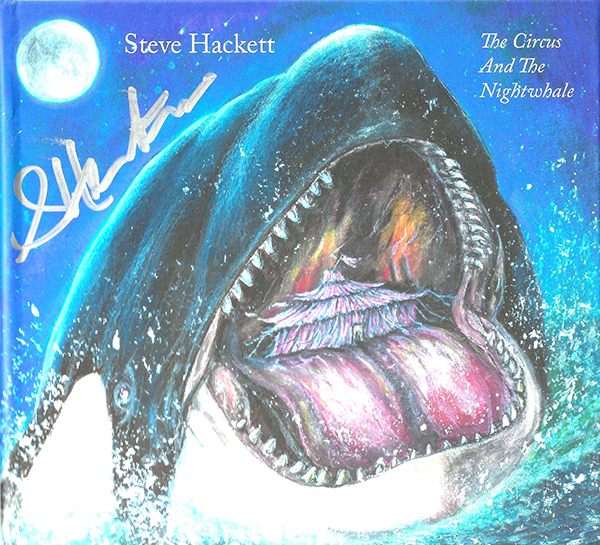
Mike Mettler: What were your goals for the surround mix of The Circus and the Nightwhale?
Steve Hackett: I love the idea that the flight path of audio starts with the placement of sounds. Music should be immersive—you could even say cinematic. Whatever it is, it needs to stand in front of you, and it needs to communicate in one way. It might be the all-out assault of where something is “placed”—as in, the explosion that is rock music itself—but on another level. Placement of sound is part of it—but there’s no substitute for writing a decent tune, of course. You need great material, great performances, a great drummer—all that stuff.
Mettler: That’s so true. If the songs don’t hold up on their own, production techniques alone can’t save them. But I do have to ask—as much as I love the 5.1, have you guys discussed doing Atmos mixes for The Circus and the Nightwhale at some point?
Hackett: Yeah, well, funny enough, Mike, when I was with Chris Lord-Alge in L.A. and he was playing me back some of the stuff he mixed on the very album that you’ve got behind you there, the live Foxtrot album [i.e., the Foxtrot at Fifty + Hackett Highlights – Live in Brighton 2CD/2DVD set, released by InsideOut Music in September 2023], he had already mixed some of my solo stuff in Atmos, which sounded stunningly good, I have to say—stunningly good. At that time, he was playing it to me at “client level”—and the client was very happy indeed.
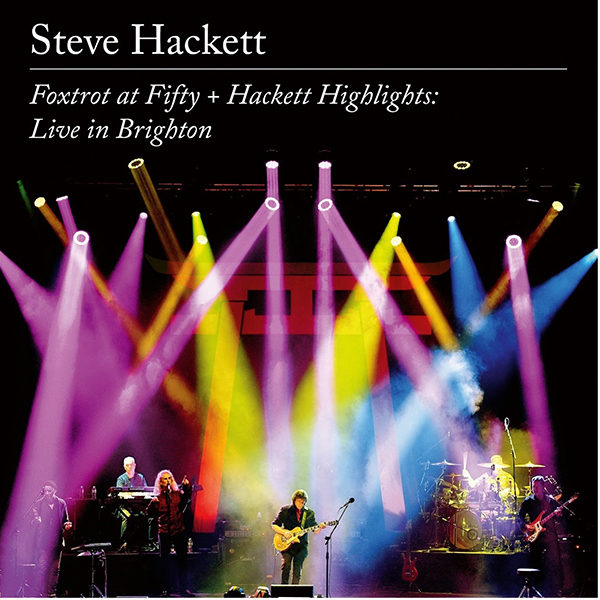
So, yes, I’m hoping, at some point, I can twist my record company’s arm and say, “I know this is an afterthought, but this album would be really good to do in Atmos.” At some point, I think it’s a must.
Mettler: I totally agree. What you’ve been able to do on the Nightwhale album is not only take advantage of the stereo soundfield, but also the full breadth of the 5 1 mix as well. How are you able to balance both sides of your mixing brain like that?
Hackett: Well, it took a vastly detailed track like the opener, “People of the Smoke,” to get to that point. At the beginning of it, 1950s radio gives way to the changes in technology and society that follow it. It’s autobiographical and it’s my story, but then it’s also everyone’s story.
In describing the surround sound experience of it, by having one thing segue into another and then into another in these little vignettes, I tried to paint a picture with it—and I love the idea of surround sound helping that out. And, of course, when the train emerges, it travels all around, and that sets up a rhythm for a string orchestra which follows it, and then you get the rock band—and this all happens in the first 30 or 45 seconds or so! (both laugh)
Mettler: Right—you literally take us through the days of your youth in less than a minute, in a sense. You also had the baby crying in there early on too, which moves into different quadrants as it continues to wail, plus you had all the city elements and everything else you mentioned, for good measure.
Hackett: Yes. Also, the children who sang that choir part came from an old Ovaltine commercial, and they were known as the Ovalteenies. So, we had a little bit of that, and it’s just—well, voices don’t sound like that anymore. We don’t have that level of distortion anymore as we tune in one station after another either. But I wanted to give you a slice of what life was like at that time, and what people considered to be entertainment. It sounds like a very old world that we’ve left behind in those 74 years or so that I’ve been on this planet. (chuckles)
Mettler: And it’s been quite a rich life at that, Steve. You know, I still love the 5.1 mixes Nick Davis did for “The Cubes”—those multidisc SACD and DVD-A/V collections of the entire Genesis catalog. From your era of the band [1971-77], what’s your favorite mix of Genesis music in 5.1?
Hackett: I think Nick did a great job on The Lamb [Lies Down on Broadway, originally released on 2LPs in November 1974], but the initial surround sound mix was rejected. I think that was largely [original Genesis lead vocalist] Peter Gabriel’s idea. He said he thought it could be braver. And, personally, I like surround mixes to really be immersive.
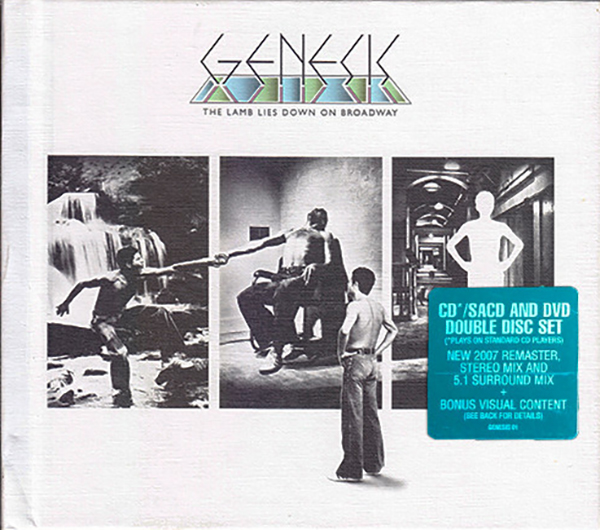
Mettler: Nick did a great job with the 5.1 Lamb mix [released on SACD and DVD-A/V in 2008], but how fantastic would a track like “The Carpet Crawlers” sound in Atmos?
Hackett: I would make a suggestion about the guitar part. It basically works as a countermelody throughout, and you couldn’t really hear it on the original [stereo] mix at all. With later mixes, you get to hear what was going on because it doesn’t get in the way of the vocal since it’s swimming in and out of the vocal. It’s supposed to be very quiet, and it needs to be quiet. It needs to function like a distant violin, so Atmos will be perfect for that. The idea of hearing it very, very high [in the height channels]—I’m hearing all sorts of possibilities here as you’re talking about it.
Mettler: For me, getting “Firth of Fifth” [from October 1973’s Selling England by the Pound] mixed in Atmos would be my personal top choice. What would you think about having “Firth of Fifth” in Atmos? [Selling England by the Pound was released in 5.1 on SACD and DVD-A/V in 2008, and later in 5.1 on Blu-ray in 2013.]
Hackett: Well, first, I agree with you, because “Firth of Fifth” is one of Genesis’ best-loved tunes. It’s powerful. It goes through lots of changes. and the magic is either in the eye of the beholder—or the ear, at the end of the day. When I was doing that one, all I had in mind initially was that long sustained note early on in the guitar solo was supposed to be a bird flying high over the sea, with outstretched wings. I had the image of it that way before it moved from its stasis—and then the movement is coming from the band underneath it. So, yes, “Firth of Fifth” does present itself as a unique possibility for Atmos.
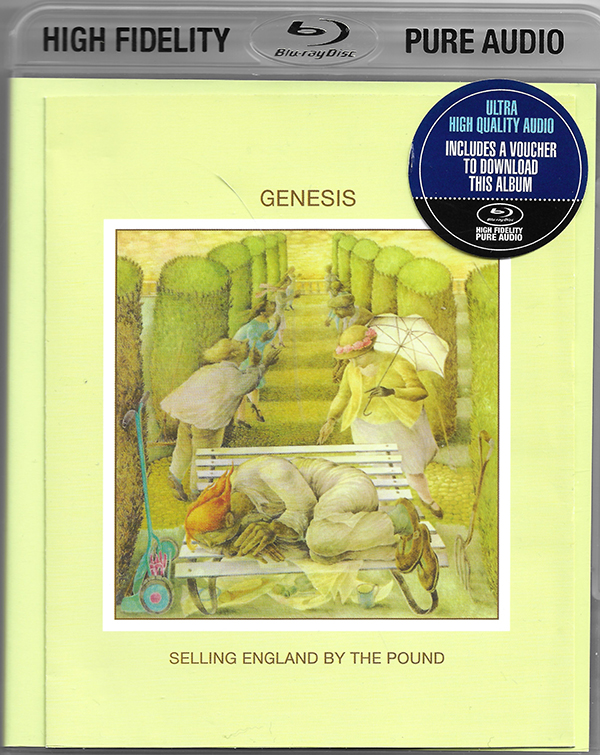
“Firth of Fifth” has Genesis’ best-loved guitar melody. No one’s going to take away from that, and I was happy to do it in stereo back in the day. I had just got my Echoplex, a fuzz box, and a Les Paul guitar—and, hmm, what else was involved? The amp at the time, I think, was a Hiwatt, and it used to sustain when I was at the amp head. Back in the day, when I was playing it live, nine times out of ten, it would work. But then, every tenth time, that sustain would fail, and it would ruin it for me.
But then the EBow appeared, and I wound up using an EBow on it—but you had to pick it up, put it down, et cetera. These days, when I play that part live, the sustain and the feedback comes from the guitar itself—the Fernandes. The beauty of the Fernandes is, it’s made for moments like that.
Mettler: I’ll never get tired of hearing you play “Firth of Fifth” live, I can tell you that. So, Steve, to wrap things up, what’s the mystical secret of why your music—with Genesis, and as a solo artist—works in both stereo and surround? How do you explain it?
Hackett: Well, I suspect very few people actually write something with surround in mind, but you have to wait for that process. That’s the thing—it’s not instant. I think writing a tune, and then thinking about where you can place those elements, seems to me to be the way to go.
Although, of course, you may well come up with something that doesn’t actually work in stereo, because it may be too repetitive. But if you’re dealing with the placement of sound, there’s no reason why that bag of money shouldn’t march around the whole auditorium—and Pink Floyd were there with it first! (both laugh) The audio experience should be as varied as possible. I work with things that should function in stereo, but, yeah—let’s also have it work in surround. Let’s have it work in Atmos. Let’s have it all.

- Log in or register to post comments

Beauty injections can be used to address a variety of concerns, including plumping lips, defining facial contours, and improving skin texture https://beautyshotmedicalclinic.com/, making them a versatile option for individuals seeking cosmetic enhancements.

Steve Hackett has been actively involved in remixing and remastering Genesis albums and his own solo works for surround sound formats. Surround sound mixes provide listeners with an immersive audio experience, allowing them to feel enveloped by the music from multiple directions. Hackett's interest in surround sound likely stems from a desire to enhance the listening experience and breathe new life into classic recordings
